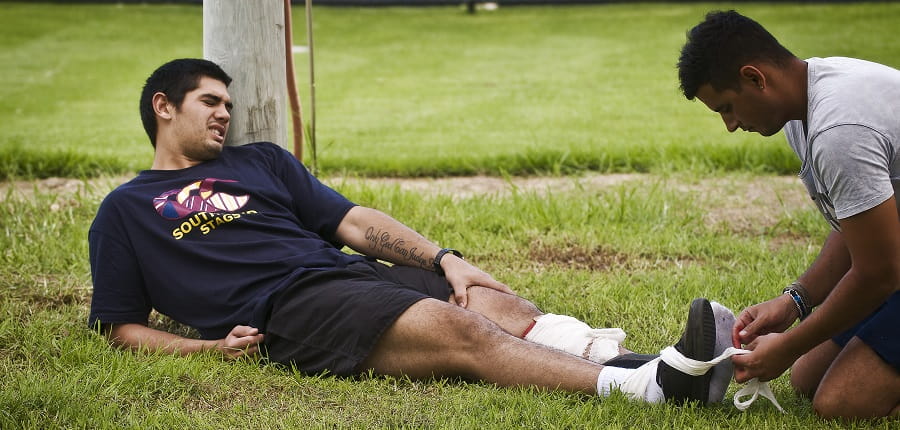
Dislocations occur when a bond has been dislodged from its normal position in a joint. Common joints that are dislocated include shoulders, knees, toes and fingers.
Management
- Follow primary survey DRSABCD
- Control any bleeding using pressure and rest, cover any wounds
-
Ask the casualty to remain still
- Talk and reassure
- Immobilise the limb using broad bandages
- Support the limb
- Pad / make as comfortable as possible
- Watch for signs of poor circulation - check hands and feet regularly for circulation
Q. Do I attempt to place the limb back into normal position?
No, do not attempt to relocate a dislocation. Not only is this very painful, further injury can be caused. This is not part of a standard of care for a first aider, therefore you wouldn’t be covered under any “good Samaritan” legislation.
Q. What if it is a fracture?
It can sometimes be very difficult to determine if a limb is dislocated or fractured. If in doubt, always treat as a fracture.
Q. Can I use ice for the swelling?
For dislocations ice can be used to help with swelling, however, if in doubt as to whether it is a dislocation or fracture, treatment will be for a fracture in which case you don’t apply ice.